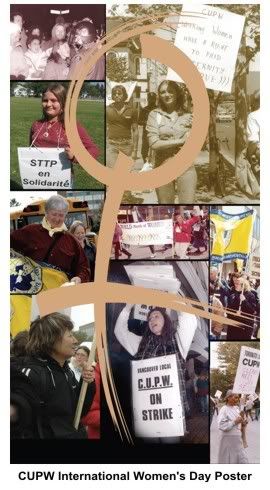ARE WE THERE YET?
 This is an excerpt from the first in a three-part series on teens and feminism being featured in the Sudbury Star:
This is an excerpt from the first in a three-part series on teens and feminism being featured in the Sudbury Star:
Part One: Teens reaction to the f-word. What is it? Where women are in terms of equality?
Part Two: No label please. University/college women talk about why the label of feminist is a difficult one to embrace, but also the gender issues that are important to them. A woman's study professor and sociologist wade in on whether labels like feminist are needed.
Part Three: Third Wavers at work in arts and culture. We'll profile a young author on blogs and her new book and explore why feminism is still needed.
Facts about feminism:
Workforce
Female to Male Earning Ratio: On average, Canadian women made 63.4 per cent of what men made in 1995 and 63.5 per cent in 2004, according to Statistics Canada.
School
At the undergraduate level, females are overtaking males at around 55-60 per cent depending on the school and program. However, at the graduate level, they are underrepresented at around 30-40 per cent. Third Year: This is the year female university students begin to leave business programs, such as finance, according to a Queen's University study.
Glass Ceiling
The first mention of a "glass ceiling" preventing women from climbing the corporate ladder appeared in a 1984 Adweek article. However, if you look at some of these numbers, it appears to still hold true.
In New Brunswick, the province with the best record for gender parity in the upper echelones of business, women occupy 22 per cent of the executive positions. In the oil industry, nine per cent of its executives are women, according to a 2002 study. Of the country's top 500 companies, only 19 were led by women in 2004.
Political Power
Females got the Franchise: Women attained the franchise, the right to vote, in 1918.
Women belong in the House: In the House of Commons, women have only achieved about a 20 per cent representation as Members of Parliament during the past few elections.
Reproductive Control
Birth Control: The sale of contraception became legal in Canada in 1969. However, as historian Doug Owram noted, "gaining access to the Pill in the face of medical practitioners was, in some communities, more difficult than buying LSD." That same year, the Criminal Code of Canada was amended to allow therapeutic abortions.
1988: On Jan. 28, the Supreme Court of Canada struck down Canada's abortion law as unconstitutional. The law was found to violate section 7 of the Charter of Rights and Freedoms because it infringes upon a woman's right to life, liberty, and security of the person.
Violence Against Women
198: The number of female victims of homicide in Canada in 2004. On average, 182 females were killed every year in Canada from 1994 to 2003. (Statistics Canada)
Seven per cent: The estimated percentage of women in a current or previous spousal relationship who experienced spousal violence during the five years up to and including 2004. Rates of spousal abuse were highest among certain segments of the population: those aged 15 to 24; those in relationships of three years or less; those who had separated; and those in common-law unions.
24 per cent: the percentage of Aboriginal women who said they had suffered violence from a current or previous partner in the five-year period up to 2004. The overall rate of Aboriginal spousal violence (both men and women) was 21 per cent during this period, compared with six per cent for the non-Aboriginal population.
LINK: Sudbury Star










2 comments:
The young women in my classes are feisty and clever and believe, often with the passion of youthful optimism, that feminism is a battle already won. I worry for them - and for my daughters, too.
Louise Brown
For more material on the Canadian Charter of Rights and Freedoms I encourage you and your readers to visit www.charterofrights.ca -- an unbiased, plain language, and interactive look at the Canadian Charter of Rights and Freedoms. It also contains relevant case law and precedents. The website is available in English, French, Chinese (traditional), German, and Italian with 6 more languages planned.
Post a Comment